Incredible Facts You Should Know About Eagles
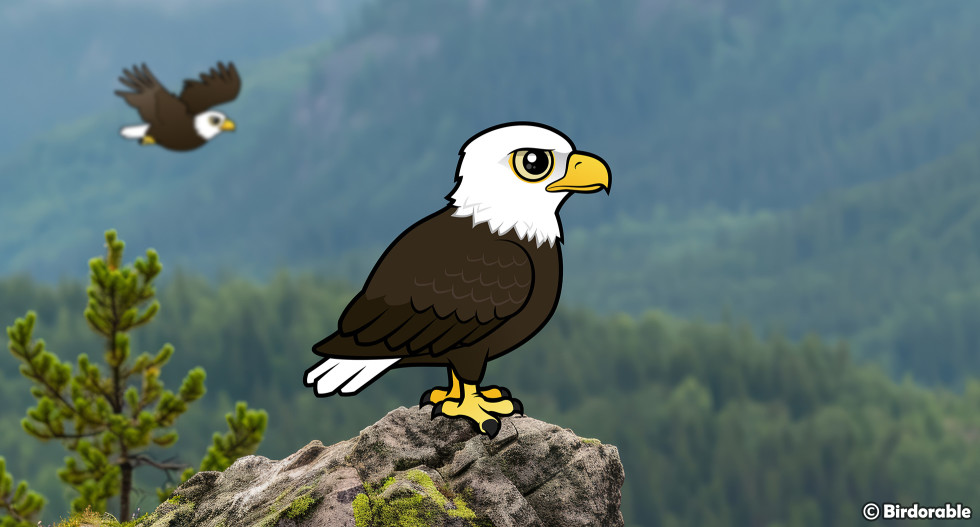
Bald Eagles in Alaska
When a lot of our readers think about eagles, they might be thinking about the iconic and familiar symbol of the United States, the Bald Eagle. Did you know that there are more than 60 recognized species of eagle? This cosmopolitan group of birds is found on every continent except Antarctica. Eagles belong to the taxonomic family Accipitridae, a group of birds of prey that also includes hawks, kites, and harriers.
Eagles are known for their powerful build, sharp talons, and keen eyesight. These magnificent birds of prey have captured human imagination for centuries. Eagles are diverse and fascinating. Here are some amazing facts about these majestic birds.
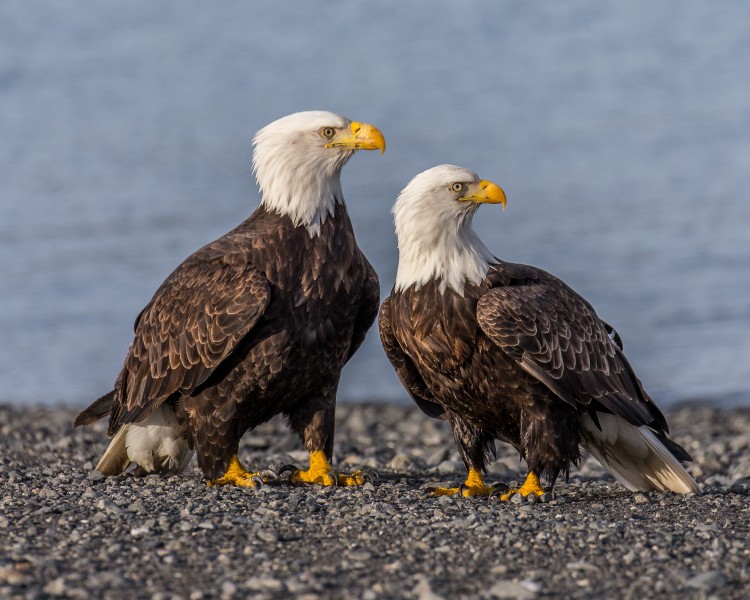
Bald Eagle sexual dimorphism by Andy Morffew (CC BY 2.0)
Size (Difference) Matters
In every species of eagle, female birds trend larger than males. This sexual dimorphism makes telling males from females, even in species where the plumage between the two is the same, relatively easy --especially if you've got a scale available!
Visionary Prowess
Eagles are famous for their extraordinary eyesight. The Wedge-tailed Eagle's eyesight is estimated to be two times better than a human's vision. This is thanks in part to extremely large pupils that minimize the scattering of light. Fantastic daytime vision allows them to spot prey from several kilometers away. Their eyes are specially adapted for acute depth perception and color recognition.
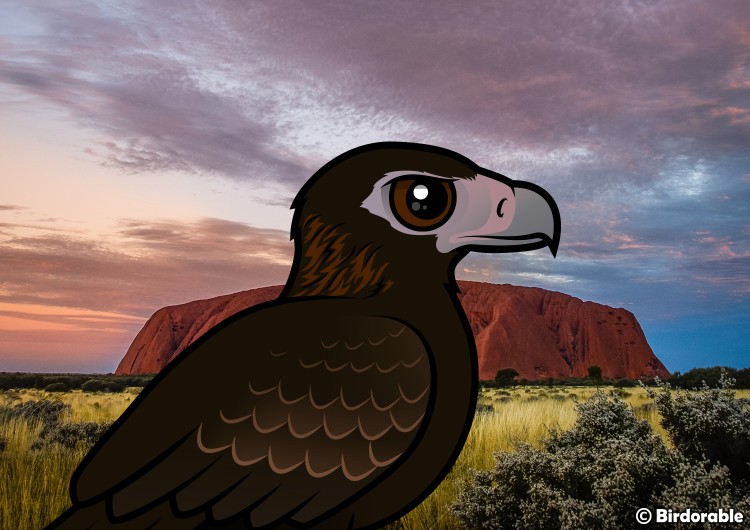
Wedge-tailed Eagle in Australia
Impressive Hunters
Most eagles are apex predators, meaning they are at the top of their food chain. They use their sharp talons and powerful beaks to hunt and kill prey, which can include fish, small mammals, and other birds. While they are opportunistic feeders, most eagles hunt live prey, including fish, birds, small mammals, and even reptiles. Their sharp, hooked beaks allow them to tear through flesh easily, while their talons are designed to grip and crush their catch. Some species, like the Philippine Eagle, have been known to hunt animals as large as monkeys!
As apex predators, eagles play crucial roles in maintaining healthy ecosystems. They help control populations of fish, mammals, and birds, ensuring that these populations don’t grow too large. Additionally, eagles often scavenge on dead animals, helping to clean up their habitats. By playing both predator and scavenger roles, eagles contribute to the balance of their ecosystems.
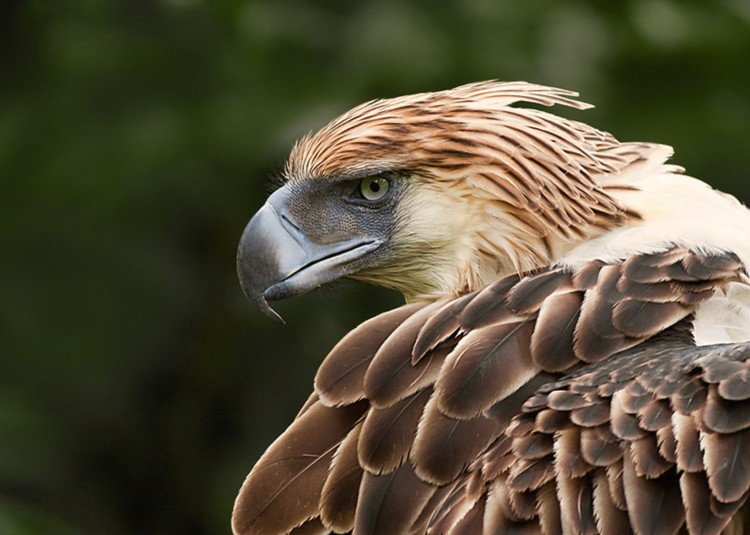
Philippine Eagle by Sinisa Djordje Majetic (CC BY-SA 2.0)
Flying Globetrotters
As mentioned above, eagles are found on every continent around the world except for Antarctica. While eagles tend to prefer environments with wide, open spaces like mountains, forests, and coasts, some species are highly adaptable. For example, the White-tailed Eagle can be found across a range of habitats in Europe and Asia, from coastal areas to inland forests and even urban environments, as long as there is water (fresh or marine) nearby. However, different species have specific habitats; for example, the Harpy Eagle lives in the dense rainforests of Central and South America.
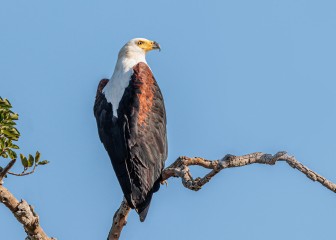
African Fish Eagle by Andy Morffew (CC BY 2.0)
Powerful Symbols
Across various cultures and throughout history, eagles have been symbols of power, freedom, and victory. In the United States, the Bald Eagle has been the national emblem since 1782, representing freedom and strength. The eagle also plays a prominent role in the mythology of ancient cultures, including Native American, Roman, and Greek traditions. In ancient Rome, the eagle was associated with Jupiter, the king of the gods, and was used as a symbol of imperial power.
Eagles are the national birds of several other countries across the world. The Golden Eagle represents Albania, Germany, Mexico, Scotland and others. The African Fish Eagle is the national bird of Namibia, while the Harpy Eagle is the avian emblem of Panama. I bet you can guess which country considers the Philippine Eagle to be its national bird!
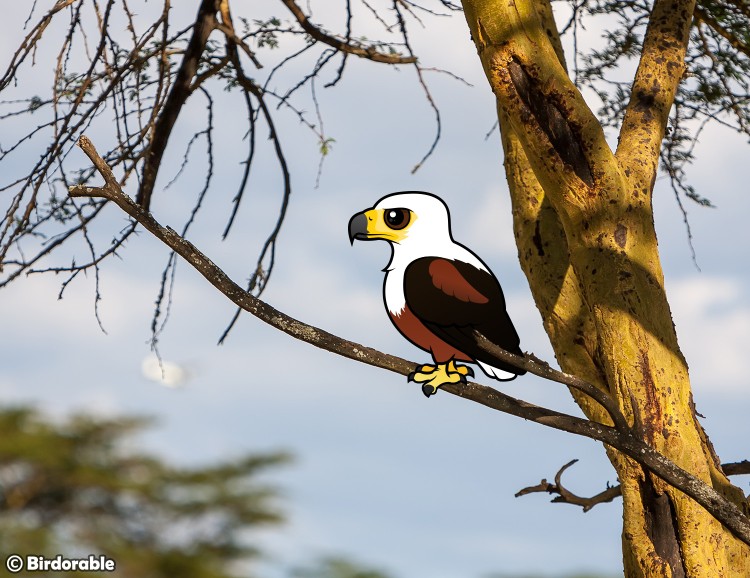
African Fish Eagle in Kenya
What's In a Name?
Several groups of eagles have a modifier in the name, including the Serpent-Eagles, Snake-Eagles, and Hawk-Eagles. Some species of owl, like the Eurasian Eagle-Owl, have the word eagle in their name, but they are not related to eagles. And one species of eagle doesn't have the word eagle in their name at all: the Bateleur (a type of Snake-Eagle)!
Endangered and Abundant
One of the most endangered species of eagle is the Philippine Eagle This species is critically endangered due to extensive loss of habitat, hunting, and the impacts of pesticide use. Found only in the Philippines, this eagle has a very small population estimated at fewer than 500 individuals remaining in the wild.
On the other hand, the Bald Eagle is often cited as a symbol of conservation success due to its impressive recovery from near extinction in several areas. This recovery is largely attributed to intensive conservation efforts, including the banning of the pesticide DDT in the United States, which had a devastating impact on the eagle's reproduction. There has been an incredible 779% increase in the Bald Eagle population in North America in the last 40 years.
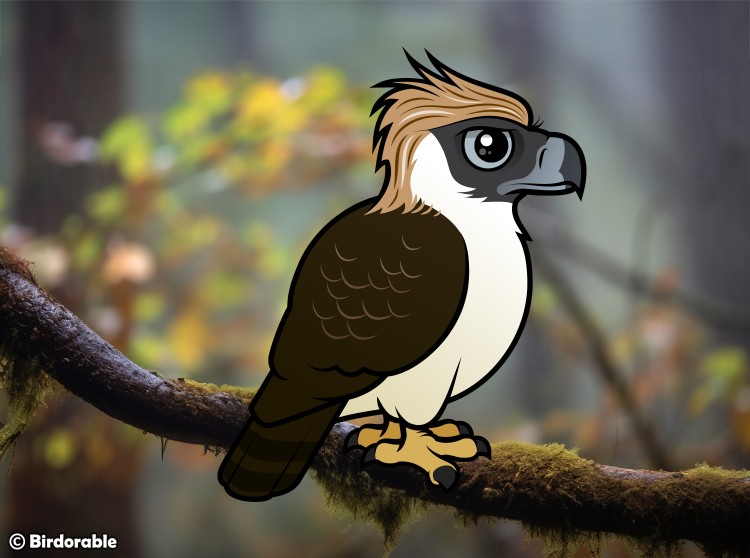
Philippine Eagle in the Philippines
Size Matters
The largest species of eagle depends on what metrics are taken into account, whether weight, length, or wingspan. On average, the Philippine Eagle is the heaviest species at around 8.3kg (18.25lbs), and also commands the largest length at 100cm (3'3"). The White-tailed Eagle boasts the largest wingspan at 218.5cm (7'2"). The Steller's Sea Eagle is the only species to appear in the top five of all three metrics.
The smallest species of eagle is the aptly-named Little Eagle, a bird of prey found in Australia. These little cuties are about the same size as a Peregrine Falcon.
Birdorable Eagles
Eagles are truly remarkable birds, with their sharp hunting skills, incredible vision, and powerful flight. Whether soaring high in the sky or guarding their nests, they continue to captivate people all over the world.























Comments
Leave a comment
Thank you!